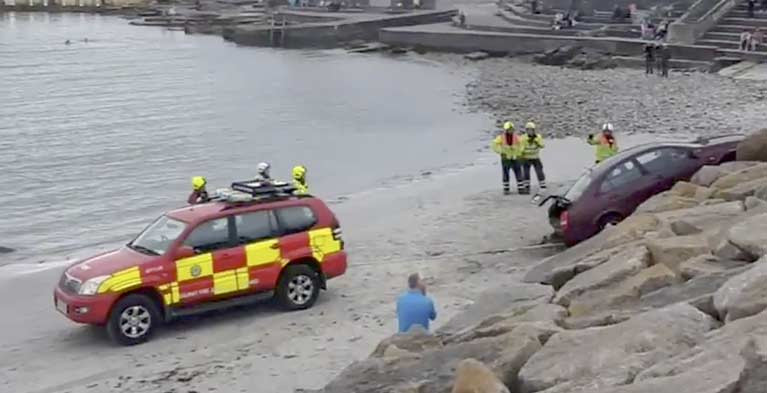An elderly couple had a narrow escape when their car left the road and tumbled over rocks towards the sea at Galway’s popular Blackrock diving tower on Wednesday evening.
Emergency services including the Galway Fire and Ambulance Service, Gardai, Irish Coastguard helicopter and RNLI lifeboat volunteers were alerted after the Nissan Almera reversed over the pavement at Salthill promenade and fell about six metres (20 ft) down towards the beach.
The incident occurred at around 5 pm, just an hour after high tide, but the car did not hit the water. Several units of Galway Fire Brigade managed to free the elderly couple from the car on the rock armour.
Car accident in #Salthill pic.twitter.com/lOwzrx0Zki
— Inga Turcan (@Inga_Turcan) June 17, 2020
The Irish Coast Guard helicopter which was en route from Shannon was stood down when it appeared that the vehicle was not in danger of hitting the water.
The couple was taken by ambulance to University Hospital Galway. It is understood that their injuries are not life-threatening.
Sgt Vincent Jennings of Salthill Garda Station said that it was a “miracle” that there were no fatalities or injuries.
“The Prom has been very busy, and this was just an hour after high tide,” Sgt Jennings said. He said onlookers gave several rounds of applause when the couple were stretchered up to the ambulance by paramedic staff.
Labour councillor Niall MacNelis, who was leaving a Galway City Council meeting in Leisureland, Salthill just after the incident happened, paid tribute to the Garda and emergency personnel.
“If it had been a warm summer’s evening, this could have been a very serious incident, and we are all glad that the couple survived,” he said.
Efforts were being made by the fire brigade to remove the vehicle from the rocks. Traffic diversions were put in place for several hours in Galway this evening.































































